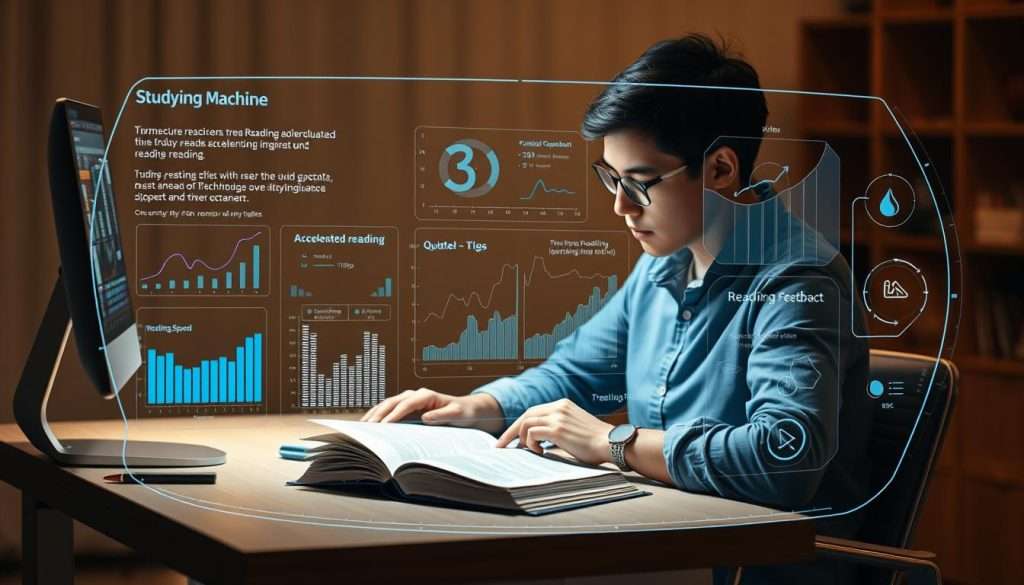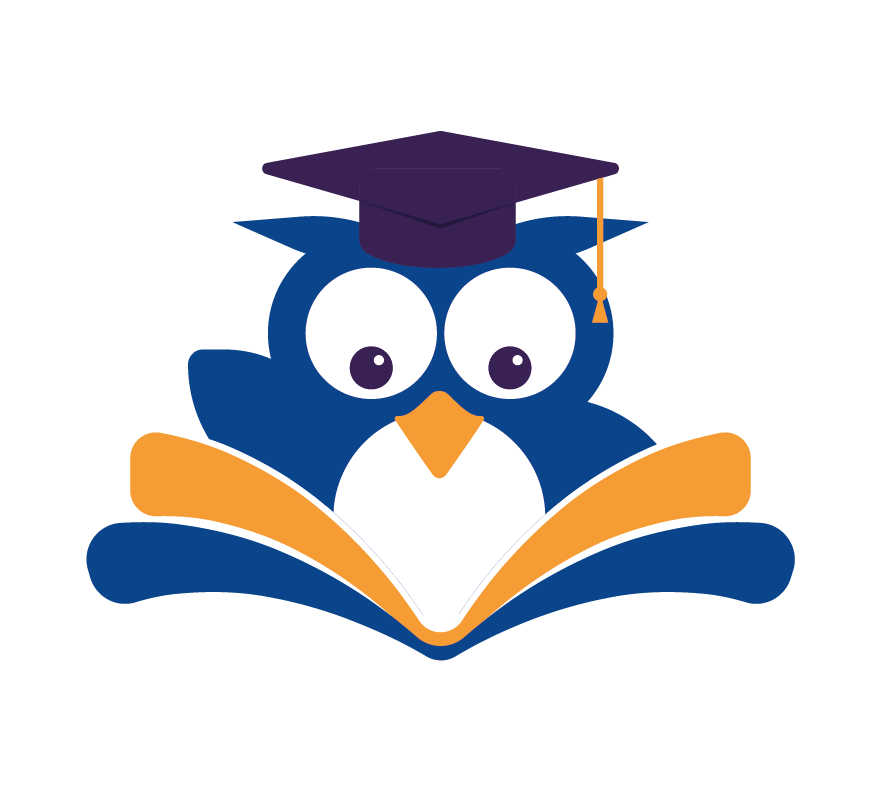Imagine being able to soak up new information like a sponge. You could learn new skills and expand your knowledge easily. This dream can become a reality by unlocking your brain’s full potential.
By understanding how our brains work and using neuroplasticity, we can transform ourselves into lifelong learners. We become adaptable and keep growing.
Becoming a learning machine is more than just knowing a lot. It’s about having a mindset that welcomes challenges and sees failures as chances to grow. It’s about staying curious, motivated, and using proven learning strategies to improve our learning skills.
Key Takeaways
- Understand the neuroscience behind learning to enhance your ability to absorb new information.
- Leverage neuroplasticity to adapt to new situations and continuously grow.
- Develop a growth mindset that embraces challenges and learns from failures.
- Use effective, evidence-based learning strategies to boost your learning.
- Cultivate curiosity and motivation to drive your lifelong learning journey.
The Science Behind Effective Learning
Learning is more than just taking in information. It’s about understanding how our brains handle it. To learn well, you need to know the science behind it.
How Your Brain Processes New Information
When you learn something new, your brain makes new connections. This is key for knowledge acquisition. It depends on your learning styles and methods.
The Neuroscience of Memory Formation
Memory is vital for learning. It’s about storing information in your brain for later use. Knowing how memories form helps in creating better education strategies.
Understanding Cognitive Load and Attention Spans
Your brain can only handle so much information at once, called cognitive load. Keeping focus is essential for learning. By improving your learning techniques and setting, you can boost your cognitive skills.
As
“The mind is not a vessel to be filled, but a fire to be kindled.” – Plutarch
shows, sparking curiosity and interest is crucial for learning.
Assessing Your Current Learning Style
To become a better learner, it’s key to know your learning style. This means figuring out how you take in information and spotting areas for growth.
Identifying Your Dominant Learning Modality
Everyone learns differently, falling into visual, auditory, or kinesthetic categories. Visual learners get information best from pictures and diagrams. Auditory learners do well with lectures and talks. Kinesthetic learners learn by doing and experiencing things directly.
Recognizing Your Learning Strengths and Weaknesses
Knowing your main learning style is just the start. It’s also important to know your strong points and areas for improvement. This self-knowledge helps you use your strengths and work on your weaknesses.
| Learning Modality | Strengths | Weaknesses |
|---|---|---|
| Visual | Good at remembering diagrams, charts | Struggles with auditory instructions |
| Auditory | Excellent at following oral instructions | May struggle with complex diagrams |
| Kinesthetic | Good at hands-on activities, experiments | May have trouble with theoretical concepts |
Creating a Personalized Learning Profile
With your learning style, strengths, and weaknesses in mind, you can make a personalized learning profile. This profile will guide you in adjusting your study methods. It will help you learn more effectively.
Optimizing Your Learning Environment
Let’s explore how to make your study space better for learning. Your study area greatly affects how well you can focus and learn new things. With a few tweaks, you can improve your education strategies and enhance your continuous learning.
Creating a Distraction-Free Study Space
To make a good study area, cut down on distractions. Pick a specific spot for studying, away from mess and interruptions. Remember, a messy space can make your mind feel cluttered. Make sure your study area is tidy and has everything you need.
The Impact of Light, Sound, and Temperature
Things like light, sound, and temperature can really change how you learn. Good lighting can ease eye strain, and a comfy temperature helps you stay on track. Try different settings to see what works best for you.
Digital vs. Physical Learning Environments
The choice between digital and physical learning spaces is a big debate. Some like the flexibility of digital learning, while others prefer the real world. Think about what works best for you and your learning style.
How to Become a Learning Machine: Core Principles
To reach your full learning potential, you need to grasp the core principles of effective learning. Becoming a learning machine is more than just gathering knowledge. It’s about using the right mindset, techniques, and practices to learn strategically.
Adopting the Growth Mindset Approach
Having a growth mindset is key to becoming a learning machine. It means believing you can grow your abilities with hard work and dedication. By facing challenges and keeping at it, you build a love for learning and become more resilient.
Implementing Deliberate Practice Techniques
Deliberate practice focuses on learning by setting goals, getting feedback, and improving your skills. To practice deliberately, find areas to get better at and do structured activities to boost your performance.
Mastering Spaced Repetition for Long-Term Retention
Spaced repetition helps keep information in your memory for a long time. Reviewing material at longer intervals helps solidify it in your long-term memory. This method works best with active recall and practice testing.
By using these core principles in your learning, you can improve how you learn and remember new things. The important thing is to stay consistent, keep motivated, and adjust your methods as you go.
Memory Enhancement Techniques
Let’s dive into some top ways to boost your memory. Improving your memory is key for learning and keeping knowledge. With the right strategies, you can remember things better.
Building Your First Memory Palace
A memory palace, or method of loci, uses a familiar place to remember things. It’s great for remembering lists and complex info. Pick a place you know well, like your home. Then, imagine walking through it and link what you want to remember to specific spots.
Chunking Information for Better Recall
Chunking breaks down big info into smaller bits. It’s perfect for remembering numbers, passwords, or long lists. By grouping info, you make it easier to remember.
Creating Powerful Mnemonic Devices
Mnemonic devices help you remember by linking info to something memorable. There are many types, like visual tricks and acronyms.
Visual Association Techniques
Visualizing info makes it stickier in your memory. Linking new info to clear images helps you recall it later. For example, a word or concept can be pictured to aid in remembering its meaning.
Acronyms and Acrostics
Acronyms and acrostics turn first letters into new words or sentences. They’re super for remembering lists or sequences. For example, “ROY G BIV” helps remember the rainbow colors: Red, Orange, Yellow, Green, Blue, Indigo, Violet.
Accelerated Reading Strategies
Learning to read faster and better is a skill you can develop. It’s not just about speed, but also about understanding and remembering what you read. We’ll show you how to improve your reading speed and grasp more information.
Mastering Speed Reading Fundamentals
First, learn the basics of speed reading. This means stopping the habit of saying words in your head and using your side vision to see more words at once. Start with simple texts to get faster.
Implementing Comprehension Boosting Techniques
Speed is key, but so is understanding what you read. Techniques like active recall and summarizing can make a big difference. We’ll also talk about how to spot and focus on important details.
Practicing Active Reading Methods
Active reading means really engaging with what you’re reading. This can be done by preparing before you start and by highlighting and annotating as you go.
Pre-Reading Preparation
Before you start, take a moment to understand the text’s structure and main ideas. Reading the abstract, introduction, and headings can give you a good overview.
Strategic Highlighting and Annotation
As you read, mark important points and jot down your thoughts in the margins. This helps you remember what you’ve read and makes reviewing easier.

| Technique | Description | Benefit |
|---|---|---|
| Speed Reading | Eliminate subvocalization and use peripheral vision | Increased reading speed |
| Active Recall | Summarize and recall key information | Improved comprehension |
| Pre-reading | Understand the text structure and main themes | Better preparation and focus |
By using these strategies every day, you’ll read more efficiently and effectively. Whether you’re in school or work, these methods will help you manage your reading better.
Note-Taking Systems That Enhance Retention
Effective note-taking is key for learners. There are many systems that help you remember better. By choosing the right method, you can remember and use what you learn.
Step-by-Step Guide to the Cornell Method
The Cornell note-taking system is well-liked. It divides your paper into three parts: cues, notes, and summary. First, split your paper into these sections.
Next, during a lecture, write down important points in the notes area. Then, go over your notes and add questions or keywords in the cues section.
Creating Effective Mind Maps for Visual Learning
Mind mapping is a visual way to take notes. It makes a diagram to link ideas. Start with a main idea, then add related ideas and subtopics.
Use colors, symbols, and images to make it stand out. This makes your mind map more fun and easy to remember.
Digital Note-Taking Tools and Organization Systems
There are also digital tools for note-taking. Tools like Evernote or OneNote can help you organize your notes. Try different systems to find what works best for you.
Using these note-taking systems can really help you remember more. This leads to better knowledge acquisition and self-improvement.
Leveraging Technology for Continuous Learning
Technology has changed how we learn, offering many tools to boost our education strategies and knowledge acquisition. By using these technologies, we can greatly improve our learning and keep up with new developments in our field.
Setting Up Spaced Repetition Software
Using spaced repetition software is a smart way to use technology for learning. It helps us review material at the best times, making it easier to remember. Some great options are:
- Anki
- Quizlet
- SuperMemo
Selecting the Right Online Learning Platforms
Choosing the right online learning platforms can be tough. We should look at the course content, interactive features, and community support. Some top platforms are:
- Coursera
- Udemy
- edX
Integrating AI Tools into Your Learning Routine
AI tools can make learning better by giving personalized advice, automating tasks, and providing feedback. For instance, AI can adjust the difficulty of learning materials based on how well we do. This keeps us challenged but not too stressed.
Building a Sustainable Learning Routine
A good learning routine is key to self-improvement. It’s about finding a balance between learning and rest. This ensures your learning is effective and sustainable.
Implementing Time Blocking for Deep Focus
Time blocking means setting aside big chunks of time for learning. By doing this, you can improve your focus and productivity. It stops multitasking and distractions, letting you dive deep into your studies.
Using the Pomodoro Technique for Learning Efficiency
The Pomodoro technique works in 25-minute study bursts, with 5-minute breaks. After four cycles, you get a 15-30 minute break. It keeps you focused and prevents burnout.
Creating a Balance Between Intensity and Rest
It’s important to balance intense learning with enough rest. Too much learning can burn you out, while too much rest can slow you down. Listen to your body and adjust your routine as needed.
Scheduling Strategic Breaks
Breaks are crucial for memory and to avoid getting tired. Use them to relax or do something different to clear your mind.
Sleep Optimization for Memory Consolidation
Good sleep is key for memory. Getting enough sleep each night boosts your learning and thinking skills.
| Technique | Description | Benefits |
|---|---|---|
| Time Blocking | Dedicated blocks of time for learning | Enhanced focus, productivity |
| Pomodoro Technique | 25 minutes of work + 5 minutes break | Improved focus, reduced burnout |
| Strategic Breaks | Planned breaks for relaxation | Memory consolidation, reduced fatigue |
By using these techniques, you can build a sustainable learning routine. This routine supports ongoing growth and development.

Overcoming Learning Plateaus and Obstacles
When you’re committed to learning, you’ll face many obstacles. But, there are ways to overcome them. As you learn more, you might hit a plateau or face challenges that slow you down.
Managing Information Overload
Information overload is a big challenge for learners. To deal with it, you need to filter information well and focus on what’s most important. Setting clear learning goals and using tools to organize what you learn can help a lot.
| Strategy | Description | Benefit |
|---|---|---|
| Prioritize Information | Focus on the most critical data first | Reduces overwhelm |
| Use Organizational Tools | Utilize apps or software to categorize information | Enhances retention |
| Set Learning Objectives | Define clear goals for what you want to achieve | Improves focus |
Techniques for Pushing Through Mental Fatigue
Mental fatigue is a common obstacle. The Pomodoro Technique can help you stay focused and refreshed. It’s also important to listen to your body and take breaks when needed.
Recovering from Learning Burnout
Burnout can be a big setback. To recover, it’s key to recognize the warning signs early and use reset strategies.
Recognizing the Warning Signs
Warning signs include persistent fatigue, decreased motivation, and reduced performance. Knowing these signs can help you take action early.
Reset Strategies
To reset, consider taking a break from intense learning, trying different activities, or practicing relaxation techniques.
By understanding and addressing these challenges, you can keep moving forward in your learning journey with more energy and focus.
Measuring Your Learning Progress
Starting your learning journey means tracking your progress. It’s key to use self-assessment and tracking systems. These tools help you see how much you’ve learned.
Implementing Effective Self-Assessment Methods
To check your progress, use good self-assessment methods. Set clear goals and test your knowledge often. Reflecting on your learning is also important.
Creating Tracking Systems for Knowledge Acquisition
A tracking system shows your progress and what needs work. You can use spreadsheets, journals, or apps. These tools help you see your learning milestones and adjust your plan.
Adjusting Your Approach Based on Performance Data
Looking at your performance data helps you improve. You can see what works and what doesn’t. Then, you can change your learning strategy to get better results.
| Assessment Method | Tracking System | Adjustment Strategy |
|---|---|---|
| Regular Quizzes | Spreadsheet | Focus on Weak Areas |
| Self-Reflection | Journal | Adjust Learning Pace |
| Project-Based Assessments | App | Change Learning Resources |
Conclusion: Your Journey to Becoming a Learning Machine
Becoming a learning machine is a lifelong journey. It needs commitment, persistence, and the right strategies. By using the techniques from this article, you can reach your full potential and meet your learning goals.
We’ve looked at how to check your learning style, improve your learning space, and use technology for learning. These steps will help you grow and improve your skills. You’ll be on your way to a growth mindset and self-improvement.
To keep going, focus on making a lasting learning routine, getting past learning hurdles, and tracking your progress. With the right learning strategies, you’ll stay motivated and reach your goals. So, start today and begin your journey to becoming a learning machine. You’ll be a lifelong learner ready to succeed in a changing world.

